Sketches of a Burmese Sayadaw in Japan
An Appreciation of Ven. U Khe Min Da
by Ken and Visakha Kawasaki
 In December 1985, while visiting Los Angeles, we met a Sri Lankan meditation teacher who asked us to organize a retreat for him in Japan the following March, when he would be passing through on his return home. About thirty people responded to our announcement.
In December 1985, while visiting Los Angeles, we met a Sri Lankan meditation teacher who asked us to organize a retreat for him in Japan the following March, when he would be passing through on his return home. About thirty people responded to our announcement.
We booked rooms at a Japanese temple near Osaka and arranged for vegetarian meals. Everything was ready, but, suddenly, we received a message that the Sri Lankan monk wouldn't be stopping in Japan, after all. What to do?
Just the day before we got the bad news, we had received some books from a friend in Rangoon. They had been carried to Japan by a mutual friend in Kyushu. When we called to thank him, we explained our predicament and mentioned that we had heard something about Burmese monks in Kyushu. He told us about the World Peace Pagoda and gave us the telephone number, advising that we ask for Ven. U Khe Min Da.
 We called, and Sayadaw himself answered the phone. We introduced ourselves and explained about our meditation retreat. "I'll come," he immediately replied. Afraid that we had been too abrupt, we described the situation a bit more. "Yes, I'll come," he repeated. That was Ven. U Khe Min Da. He needed no explanation except the dates.
We called, and Sayadaw himself answered the phone. We introduced ourselves and explained about our meditation retreat. "I'll come," he immediately replied. Afraid that we had been too abrupt, we described the situation a bit more. "Yes, I'll come," he repeated. That was Ven. U Khe Min Da. He needed no explanation except the dates.
It was a splendid retreat. Sayadaw taught in both English and Japanese, and all participants were delighted. As we were taking him to the station where he would catch the bullet train for Kyushu, we asked, "In the thirty years you have been in Japan, how many times have you taught in a retreat like this?"
"Never," he replied.
"Why not?" we asked in astonishment.
"No one ever asked," he explained matter-of-factly.
Sayadaw invited us to visit Moji anytime, so, that summer, on our return from Burma, where we practiced for the first time at the Mahasi Yeiktha, we took the ferry from Pusan to Shimonoseki and a taxi across the suspension bridge to Kita-Kyushu.
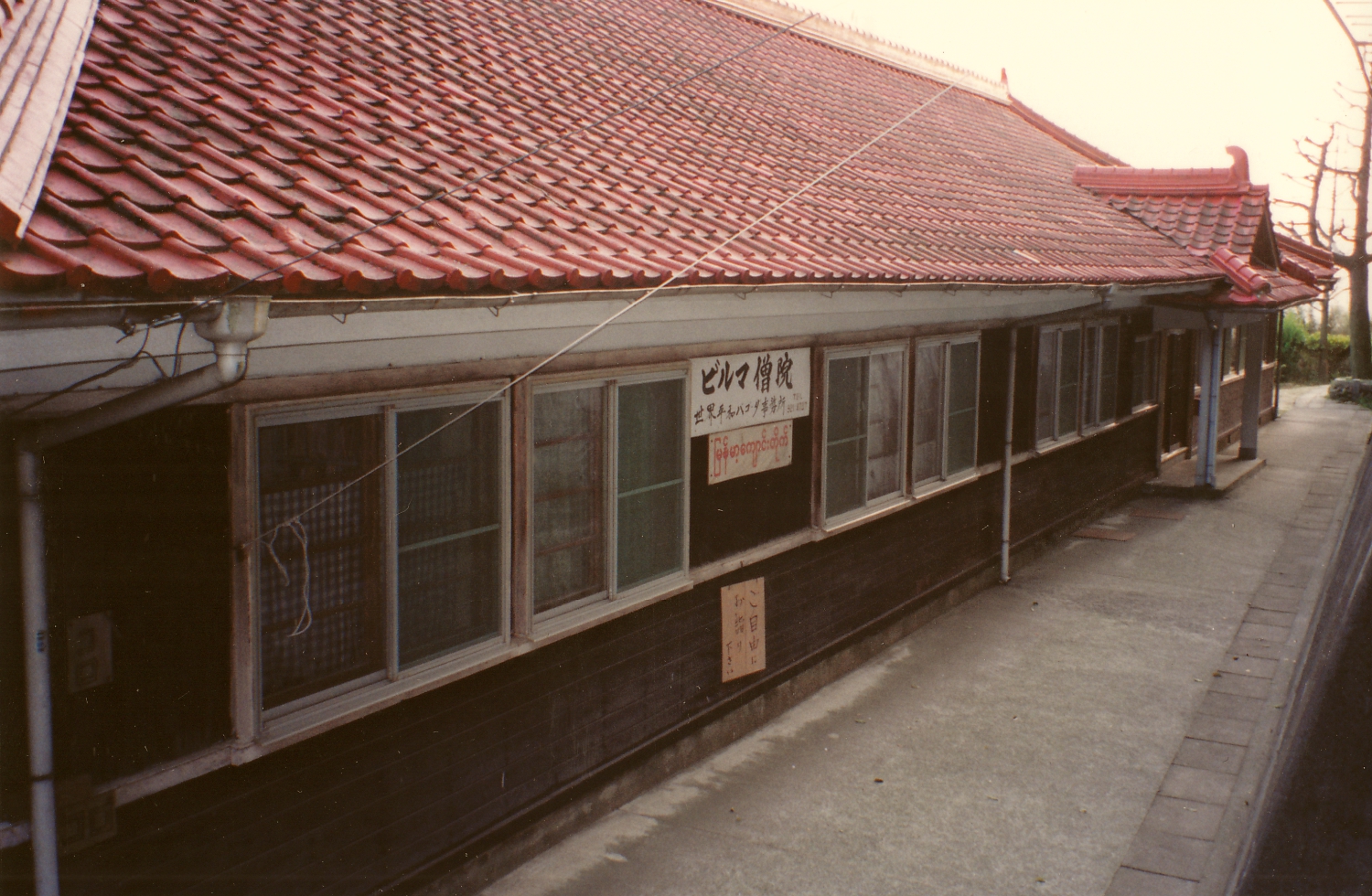 Sitting atop a mountain, the World Peace Pagoda overlooks the Straits of Dannoura and the port of Moji. The monastery, just below, is a simple wooden building, with a shrine room at one end and small rooms for monks at the other. There are also a storeroom, a sitting room for visitors, a tiny kitchen, and a very plain dining room with only one low table. A few years before, the abbot had added a concrete annex with a kitchen, a dining room, a toilet, and a bath on the ground floor, and a spacious meditation hall above, which had hardly ever been used. We slept in the meditation hall, and Sayadaw suggested that we have the next retreat there.
Sitting atop a mountain, the World Peace Pagoda overlooks the Straits of Dannoura and the port of Moji. The monastery, just below, is a simple wooden building, with a shrine room at one end and small rooms for monks at the other. There are also a storeroom, a sitting room for visitors, a tiny kitchen, and a very plain dining room with only one low table. A few years before, the abbot had added a concrete annex with a kitchen, a dining room, a toilet, and a bath on the ground floor, and a spacious meditation hall above, which had hardly ever been used. We slept in the meditation hall, and Sayadaw suggested that we have the next retreat there.
 As soon as we realized that this was, indeed, possible, we began organizing. That December, as soon as classes had finished, we left for the monastery. For the first few days, we cleaned, vacuumed the carpets, and arranged as much as we could. The next two weeks were an open retreat. Meditators arrived, singly or in small groups, and stayed as long as they could–some for two days, some a little longer, and one woman stayed a full ten days. We prepared simple vegetarian food, and, every morning, the local woman who cooked for the monks sent over rice and a side dish. In the evening Ven. U Khe Min Da gave a two-hour Dhamma lesson. He made himself available at all times for private consultation with any meditator who needed personal instruction.
As soon as we realized that this was, indeed, possible, we began organizing. That December, as soon as classes had finished, we left for the monastery. For the first few days, we cleaned, vacuumed the carpets, and arranged as much as we could. The next two weeks were an open retreat. Meditators arrived, singly or in small groups, and stayed as long as they could–some for two days, some a little longer, and one woman stayed a full ten days. We prepared simple vegetarian food, and, every morning, the local woman who cooked for the monks sent over rice and a side dish. In the evening Ven. U Khe Min Da gave a two-hour Dhamma lesson. He made himself available at all times for private consultation with any meditator who needed personal instruction.
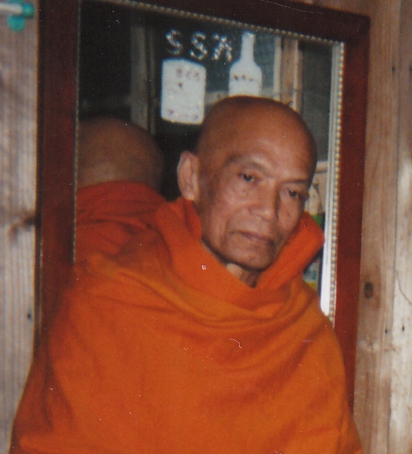 For everyone, staying in Moji was a rare experience of Burmese monastic life. Every day, we woke up at five o'clock and attended morning chanting at six. After offering at least one dish to the monks, we ate our simple breakfast in our own dining room. As at Mahasi, we allowed everyone to set up his own meditation schedule of meditation, alternating sitting and walking. As much as possible, we kept Noble Silence all day. The only breaks from meditation were for chanting, lunch and the evening Dhamma lesson. At night, folding screens separated the men's and women's sleeping quarters.
For everyone, staying in Moji was a rare experience of Burmese monastic life. Every day, we woke up at five o'clock and attended morning chanting at six. After offering at least one dish to the monks, we ate our simple breakfast in our own dining room. As at Mahasi, we allowed everyone to set up his own meditation schedule of meditation, alternating sitting and walking. As much as possible, we kept Noble Silence all day. The only breaks from meditation were for chanting, lunch and the evening Dhamma lesson. At night, folding screens separated the men's and women's sleeping quarters.
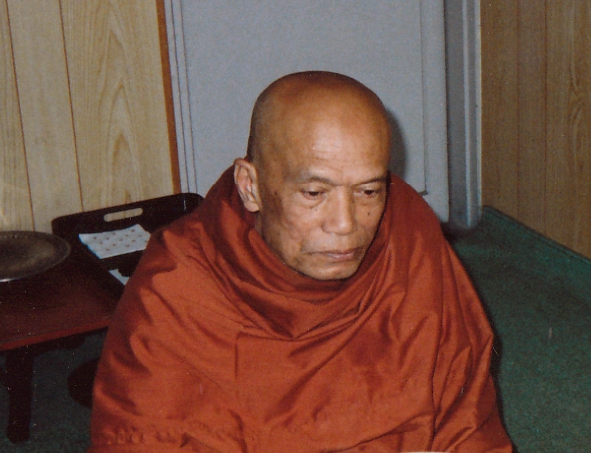 Winters in Northern Kyushu can be terribly cold when the freezing wind blows from Korea, but Ven. U Khe Min Da had purchased a heater for the hall, so it was comfortable all day.
Winters in Northern Kyushu can be terribly cold when the freezing wind blows from Korea, but Ven. U Khe Min Da had purchased a heater for the hall, so it was comfortable all day.
Donations from the meditators purchased an on-demand water heater for the monastery kitchen. After we left, the heater we had used in the meditation hall was moved to the shrine room, where the monks had, for thirty winters, chanted in the freezing cold. The windows and doors of the wooden building did not fit tightly, and all the rooms were drafty. Until 1986, only the monks' sleeping rooms had any heat at all.
 Ven. U Khe Min Da had first gone to Japan with the renowned meditation teacher, Mahasi Sayadaw, in 1956. When Mahasi Sayadaw asked for a someone to stay in Japan, Ven. U Khe Min Da volunteered. At that time, life in Burma was quite comfortable for monks, but Japan hadn't recovered from the devastation of World War II. The Japanese were still suffering from hardships and shortages. Life was difficult, and the climate was harsh.
Ven. U Khe Min Da had first gone to Japan with the renowned meditation teacher, Mahasi Sayadaw, in 1956. When Mahasi Sayadaw asked for a someone to stay in Japan, Ven. U Khe Min Da volunteered. At that time, life in Burma was quite comfortable for monks, but Japan hadn't recovered from the devastation of World War II. The Japanese were still suffering from hardships and shortages. Life was difficult, and the climate was harsh.
Moji was the port from which troop ships left for Burma during the war. It was the last view of the Japanese motherland soldiers would see until they returned home, if they returned alive. The land for the pagoda and monastery was donated by an old soldier who was grateful to the Burmese people for helping him stay alive in Burma during the war. The support for the pagoda came almost entirely from Japanese war veterans. On the altar inside the pagoda there were many urns of ashes and the memorial tablets of war casualties from the Burma campaigns. Veterans frequently came to pay their respects and to reminisce.
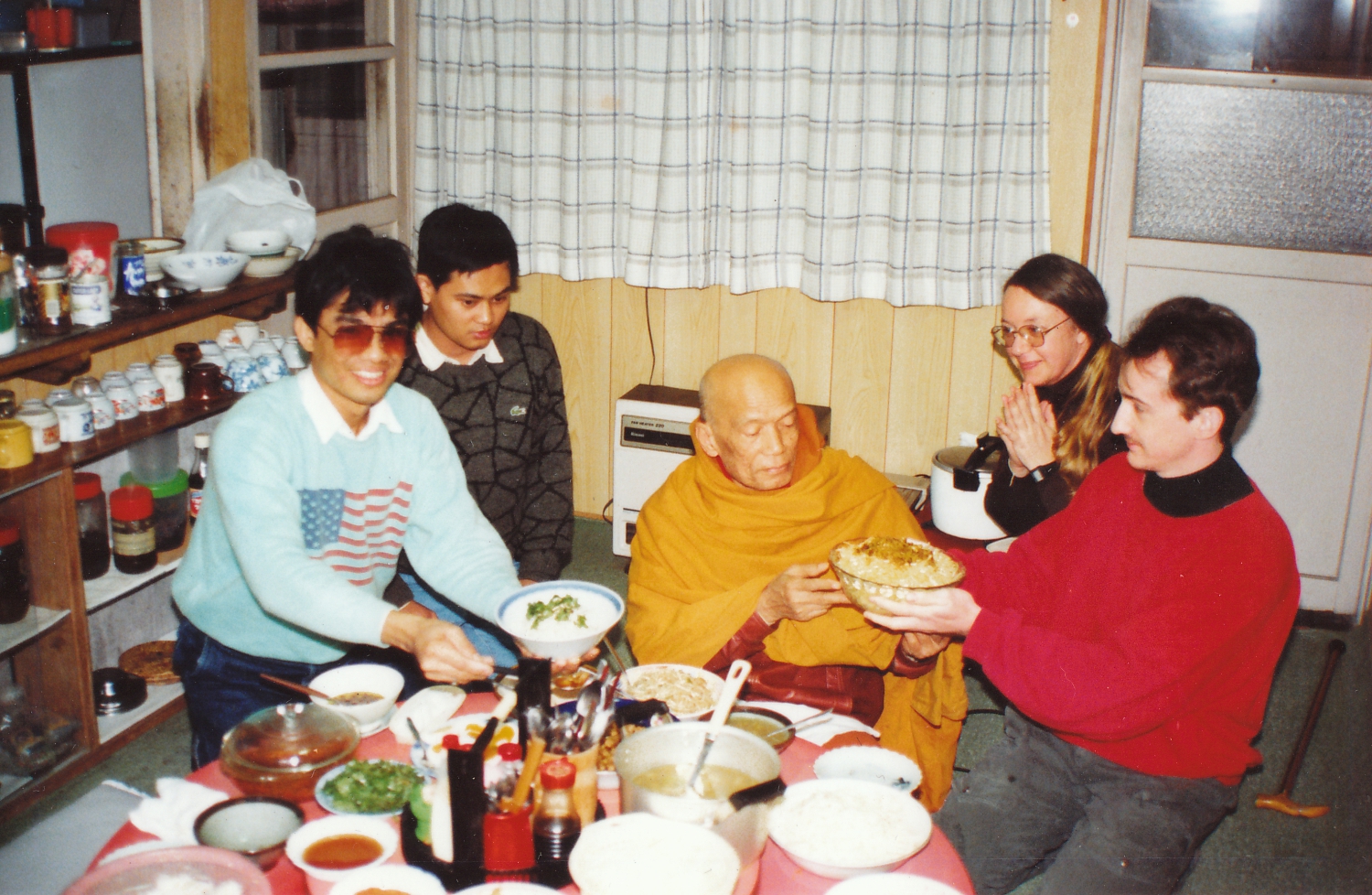 During evening chanting, faces would sometimes appear at the windows. Whenever a ship arrived at Moji port with Burmese sailors, as soon as the men could get shore leave, they climbed the hill in their bare feet, no matter what the weather, to pay their respects. Many would return the next day to cook mohinga and other Burmese delicacies for the monks. It was their great joy, and the best thing they could do to overcome their homesickness.
During evening chanting, faces would sometimes appear at the windows. Whenever a ship arrived at Moji port with Burmese sailors, as soon as the men could get shore leave, they climbed the hill in their bare feet, no matter what the weather, to pay their respects. Many would return the next day to cook mohinga and other Burmese delicacies for the monks. It was their great joy, and the best thing they could do to overcome their homesickness.
In everything he did, Ven. U Khe Min Da set examples of frugality, generosity, and humility . It was a pleasure to watch him in action and to listen to the many stories he could tell so well. Every appliance he had purchased or received was labeled with the date of receipt. It was easy to see which one had been used for five years, which for ten, and which for fifteen or more. In the monastery, nothing was wasted. Sayadaw often related the story of Ananda's explaining to King Pasenadi that monks use each robe as long as they can and then recycle them again and again until they disappear into the mortar for bricks. This is exactly how Ven. U Khe Min Da and the other monks in Moji treated everything. As for robes, every year, Sayadaw gave us a bundle of robes to be donated to the refugee monks on the Thai/Burma border.
 Sayadaw tried gently to teach the Japanese that Burmese monks were different from Japanese priests and that their lifestyles (vinaya) were different, but he was not always successful. He would, however, never refuse a gift that anyone offered, even when the gift was inappropriate. Anything he could not use himself, he would quietly pass on to someone who could. The gift would not be wasted, and the donor would have gained satisfaction from his offering. Moreover, Sayadaw was imaginative. Once, a Japanese businessman said that he would like to donate several bottles of high quality sake, Japanese rice wine, to the monastery. Japanese priests have no restriction against drinking alcohol, and such a gift to a Japanese temple is highly appreciated. Sayadaw merely asked that the bottles not be placed on the altar. He said that he would take care of them. As soon as the donor left, Sayadaw called one of his friends, a ships' chandler in the port, and arranged to exchange the sake for several cases of tinned milk. Whenever Sayadaw told this story, he always added, "They say that Christ was able to turn water into wine, but I was able to turn sake into condensed milk!"
Sayadaw tried gently to teach the Japanese that Burmese monks were different from Japanese priests and that their lifestyles (vinaya) were different, but he was not always successful. He would, however, never refuse a gift that anyone offered, even when the gift was inappropriate. Anything he could not use himself, he would quietly pass on to someone who could. The gift would not be wasted, and the donor would have gained satisfaction from his offering. Moreover, Sayadaw was imaginative. Once, a Japanese businessman said that he would like to donate several bottles of high quality sake, Japanese rice wine, to the monastery. Japanese priests have no restriction against drinking alcohol, and such a gift to a Japanese temple is highly appreciated. Sayadaw merely asked that the bottles not be placed on the altar. He said that he would take care of them. As soon as the donor left, Sayadaw called one of his friends, a ships' chandler in the port, and arranged to exchange the sake for several cases of tinned milk. Whenever Sayadaw told this story, he always added, "They say that Christ was able to turn water into wine, but I was able to turn sake into condensed milk!"
On another occasion, an old soldier asked whether the monks liked to eat crabmeat. Sayadaw replied that the monks ate whatever they were offered. The next day, the man had six live crabs delivered to the monastery. For the Japanese, this is a guarantee that the meat is fresh when it is cooked, but the monks could neither kill the animals nor have them killed for their lunch. Without a word, Sayadaw put them into the bathtub filled with fresh water. That night, the monks were awakened by strange noises. The crabs had escaped and were wandering up and down the hallway, their long, spindly legs scratching on the polished wooden floor. The monks struggled to capture the frisky animals, mindfully avoiding the sharp pincers, put them into a garbage can filled with water, and closed the lid tightly. The next day, the can was taken to the port, and the crabs were cheerfully released into the sea.
One day, while Sayadaw was speaking with a visiting Japanese priest at the monastery, a poorly-dressed man appeared at the door and asked for money. Sayadaw put a little food from the refrigerator into a bag and gave it to him. He also handed him an envelope with a one thousand yen note. (In Japan, giving someone anything unwrapped is rude.) The man went away grateful and happy. When Ven. U Khe Min Da returned to the sitting room, the Japanese priest told him that the same beggar had visited his temple and that he had roughly sent him away empty-handed. That man, the priest scolded Sayadaw, was a notorious drunkard."You fool!," Sayadaw exclaimed. "In that way, you made an enemy. If he wanted to get revenge, he could come back and burn down your temple! Whenever asked, you should always give something, even if it isn't as much as the person wants. And the way of giving should be polite. Even a bum has his own dignity." Whenever we come across beggars, we remember those wise words.
 When Sayadaw first arrived in Japan, he had been induced to take out a term life insurance policy, which matured about fifteen years ago. He was overjoyed to receive a payment of several million yen. Without hesitation, he arranged for a company in Holland to send rolls of high quality paper to the only printing press in Burma capable of handling it to produce new copies of the Tipitaka. He was never happier than when he was giving.
When Sayadaw first arrived in Japan, he had been induced to take out a term life insurance policy, which matured about fifteen years ago. He was overjoyed to receive a payment of several million yen. Without hesitation, he arranged for a company in Holland to send rolls of high quality paper to the only printing press in Burma capable of handling it to produce new copies of the Tipitaka. He was never happier than when he was giving.
Committed to staying in Japan, Sayadaw decided to donate his body for medical study. He contacted the White Chrysanthemum Society, an association for body donation, and expressed his desire. He was told that no foreigner had ever done this and that it would be very difficult. They asked about his family. He replied that, as a monk, he had no family. They asked about his body being sent back to Burma. He replied that he had no intention of returning and that there would be no one to accept his body. For several months, the Society continued presenting obstacles. Finally, they could find no reason not to accept his request, and he was successfully registered. Learning of this, we wrote to the Society and had no trouble joining. His persistence had completely changed the Society's policy. Of course, our leaving Japan cancelled our body donation there, but we have now registered for a similar donation to the University of Peradeniya. It is a great joy to reflect that after death our bodies will be put to a good use. We thank Ven. U Khe Min Da for his good example.
 Many people have urged Sayadaw to record his experiences, his wisdom, and his teaching in a book, which, they assure him, would be very popular. Having studied as a boy at a missionary school in Burma, Sayadaw is fluent in English, and his Japanese is perfect. He could easily write in any of the three languages. He has constantly refused all such suggestions, strongly criticizing what he calls "book makers," those who are interested mainly in seeing their names in print. Whenever someone mentions writing a book, he replies, "The headmaster at the Methodist school where I studied always told us, "Don't show off your ignorance!'" Ven. U Khe Min Da consistently practices that maxim.
Many people have urged Sayadaw to record his experiences, his wisdom, and his teaching in a book, which, they assure him, would be very popular. Having studied as a boy at a missionary school in Burma, Sayadaw is fluent in English, and his Japanese is perfect. He could easily write in any of the three languages. He has constantly refused all such suggestions, strongly criticizing what he calls "book makers," those who are interested mainly in seeing their names in print. Whenever someone mentions writing a book, he replies, "The headmaster at the Methodist school where I studied always told us, "Don't show off your ignorance!'" Ven. U Khe Min Da consistently practices that maxim.
Japanese Buddhists are proud of their Mahayana tradition of vegetarianism, even though it is hardly practiced anymore. In fact, Japanese priests generally fail to observe or even recognize the vinaya. Ven. U Khe Min Da is often invited to afternoon ceremonies at Japanese temples. These functions invariably include a meal. Food is set before him on the lacquer tray, but, of course, he does not touch it. The Japanese priests jokingly call him a "hungry ghost" because they never see him eat. He laughs with them and replies, "All right. I'll go to hell when I die, but, because I have done many good deeds, I won't have to stay long, but you break all the rules, so you will be there for a long time."
For about ten years, we spent part of every winter vacation at the monastery, often as much as a full month. Sometimes friends joined us for a few days, but usually it was only the two of us and Sayadaw. The monastery was a perfect place for meditation. All of the stress of life in Japan melted away, and we would return to our work routine in the new year refreshed and invigorated. Between meditation sessions, Sayadaw taught us to make catumadhu, yellow tofu, and delicious golden sticky rice, which he always gave us for our return trip by ferry or bullet train. We looked forward to the evening sessions with him. He taught us the rudiments of Pali, clarified points of vinaya, and explained many aspects of Burmese Buddhist practice. It was from him that we developed a love of the Jatakas. Although he had never before explained the Jatakas in English, we discovered that his spontaneous translation from the Burmese and Pali matched the Pali Text Society version almost word for word. Whenever we found a significant difference, it was because the PTS translators, being scholars but not Buddhists, had misinterpreted the text. As we were working on our first books of Jatakas, we frequently conferred with him about phrases which didn't seem quite right. He was always able to resolve the problem and to point us in the right direction.
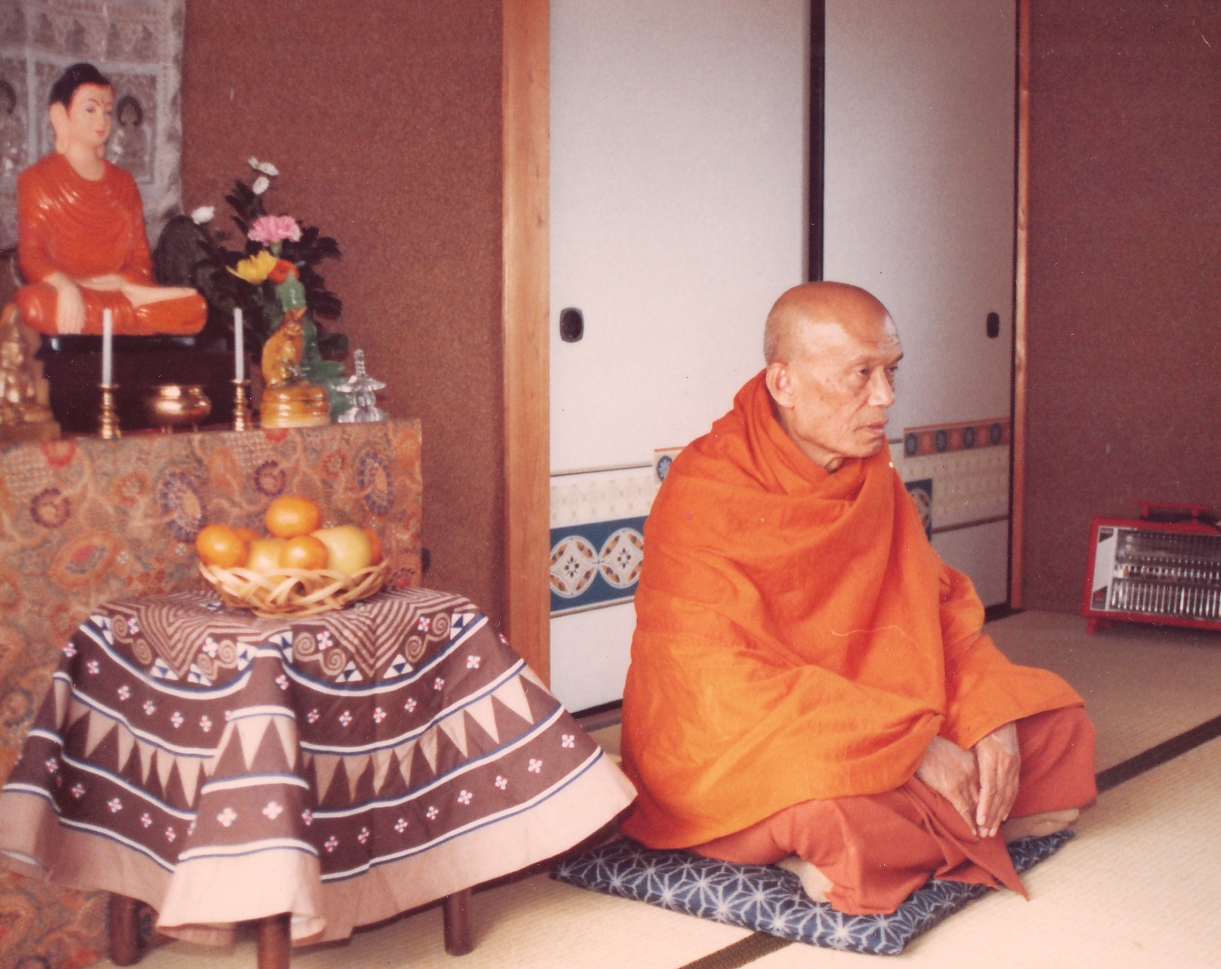 We often invited Ven. U Khe Min Da to Kansai for a retreat, a ceremony, or a special dana at our house. He never refused to come for a day or even for a week. All of our friends were happy to meet him, to offer dana, and to hear his lessons in which he related many common everyday occurrences to the Dhamma in unique ways. Invariably, his teaching perfectly suited the particular issue that the listener was struggling with at that moment. We often wondered whether he was endowed with supernatural powers which allowed him to read minds.
We often invited Ven. U Khe Min Da to Kansai for a retreat, a ceremony, or a special dana at our house. He never refused to come for a day or even for a week. All of our friends were happy to meet him, to offer dana, and to hear his lessons in which he related many common everyday occurrences to the Dhamma in unique ways. Invariably, his teaching perfectly suited the particular issue that the listener was struggling with at that moment. We often wondered whether he was endowed with supernatural powers which allowed him to read minds.
During one of his visits, he attended the morning assembly at the Buddhist high school where we taught. The principal invited him to address the 5000 boys, and Sayadaw gave them a short introduction to vipassana meditation. Both students and teachers were impressed with this friendly and gentle monk from Burma who spoke so clearly and so earnestly in perfect Japanese.
One year, when Visakha's mother and aunt visited Japan, we included a two-night stay in Moji in their itinerary. They enjoyed meeting the monks and getting an inkling of what had become so important to us in Japan. They didn't meditate, but they asked questions, enjoyed the chanting, learned how to pay respect, and delighted in offering dana.
 In 1999, we returned to the United States to take care of Visakha's ailing mother. One of our biggest regrets in leaving Japan was being separated from Ven. U Khe Min Da. About one year later, we used some of our airline miles to purchase a ticket for him to fly business class to Flint, Michigan. Mother was delighted to see him again. He encouraged her to watch her breath to ease the panic attacks that often occur with COPD patients. She never realized that she was actually meditating, nor did she come close to accepting Buddhist doctrines, but the hours she spent with Sayadaw gave her a great deal of comfort, and she enjoyed offering dana. We arranged for Sayadaw to stop in San Francisco on his return, and the Burmese community there were gratified at the opportunity to hear his teaching. as well.
In 1999, we returned to the United States to take care of Visakha's ailing mother. One of our biggest regrets in leaving Japan was being separated from Ven. U Khe Min Da. About one year later, we used some of our airline miles to purchase a ticket for him to fly business class to Flint, Michigan. Mother was delighted to see him again. He encouraged her to watch her breath to ease the panic attacks that often occur with COPD patients. She never realized that she was actually meditating, nor did she come close to accepting Buddhist doctrines, but the hours she spent with Sayadaw gave her a great deal of comfort, and she enjoyed offering dana. We arranged for Sayadaw to stop in San Francisco on his return, and the Burmese community there were gratified at the opportunity to hear his teaching. as well.
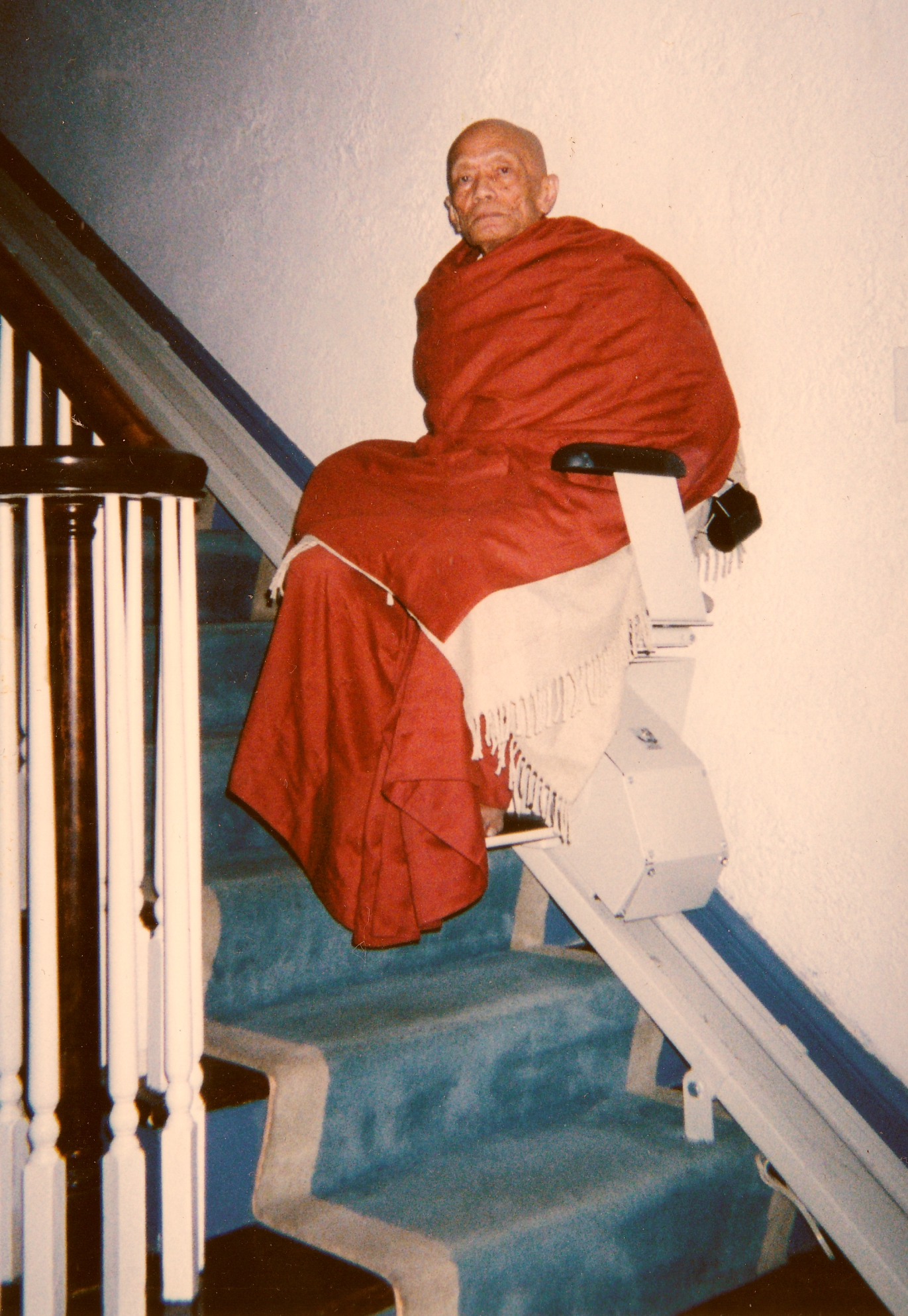
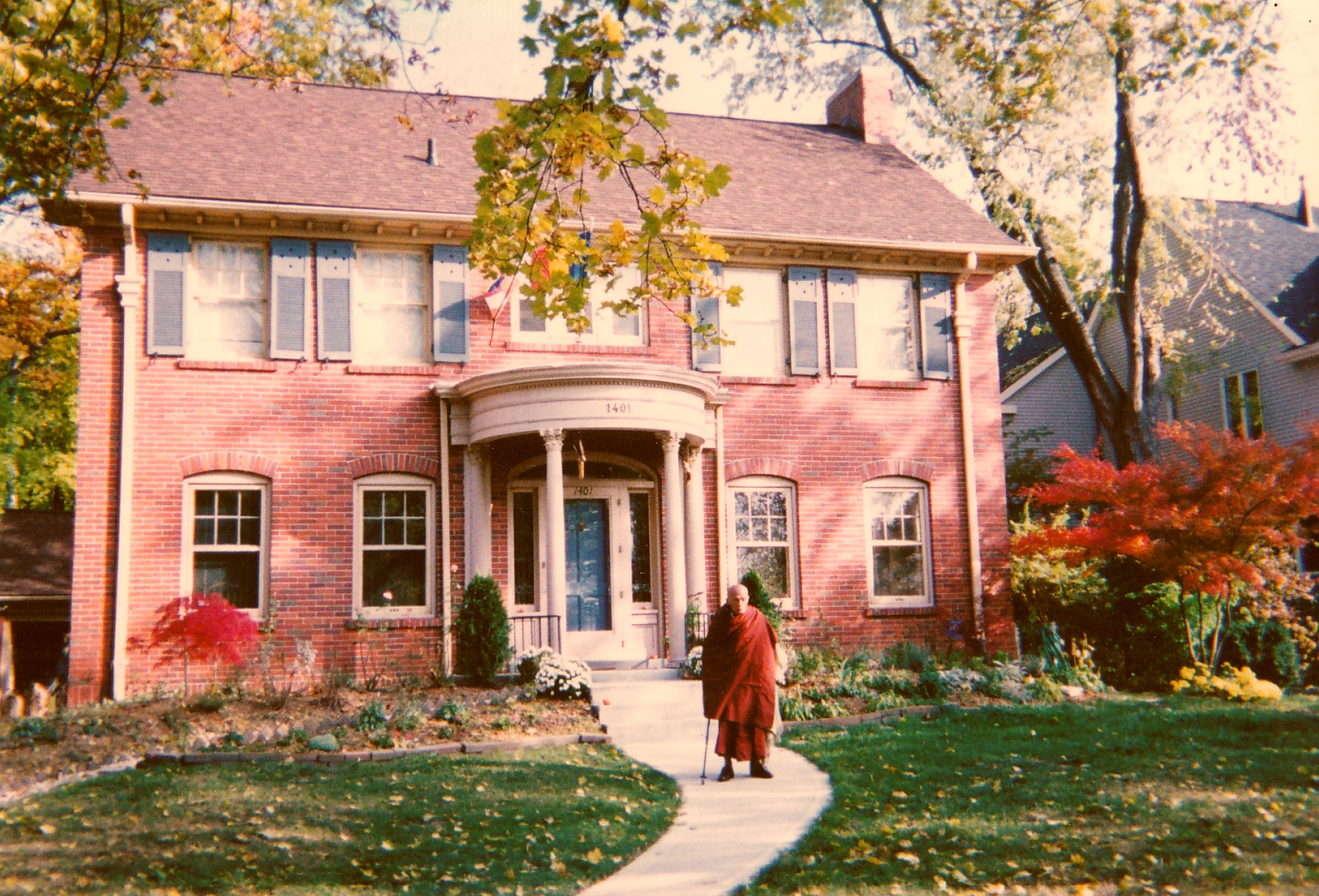 A year or two later, we saw a video of Ven. U Khe Min Da receiving a second award in Burma, We were surprised to see that he had difficulty walking and that he had become quite frail. Nevertheless, when we invited him a second time to Flint, he accepted without hesitation. By this time, Mother had passed away, and we had moved with a Burmese family into a large brick house, almost a mansion, in a beautiful neighborhood. We prepared a room for him on the second floor, and he appreciated using Visakha's stair lift to ride up and down. Many of our friends were eager to meet him, and some members from our interfaith group dropped by the house. Sayadaw gladdened them all and gave impromptu meditation instruction to those who were interested. It was Halloween, and he was amused at seeing all the little ghosts and goblins who appeared at the door, "Trick or Treating" for candy.
A year or two later, we saw a video of Ven. U Khe Min Da receiving a second award in Burma, We were surprised to see that he had difficulty walking and that he had become quite frail. Nevertheless, when we invited him a second time to Flint, he accepted without hesitation. By this time, Mother had passed away, and we had moved with a Burmese family into a large brick house, almost a mansion, in a beautiful neighborhood. We prepared a room for him on the second floor, and he appreciated using Visakha's stair lift to ride up and down. Many of our friends were eager to meet him, and some members from our interfaith group dropped by the house. Sayadaw gladdened them all and gave impromptu meditation instruction to those who were interested. It was Halloween, and he was amused at seeing all the little ghosts and goblins who appeared at the door, "Trick or Treating" for candy.
We had expected that that would be the last time we would have the opportunity of meeting Ven. U Khe Min Da, but, a few years later, we found ourselves in Bangkok, needing to leave the country for new re-entry permits. We had sufficient miles in our airline account, so we took a short trip to Pusan. Being so close, we decided to use the hydrofoil for a quick hop to Moji. Sayadaw was glad to see us, and we were happy to spend two peaceful days at the monastery. Life continued at the same pace as before, and we felt as if we'd never left. Friends came down from Osaka, and Sayadaw gave us all a lesson, picking up exactly where he had left off the last time. He continues to manage the affairs of the monastery, having become the official abbot, but he no longer walks up and down the mountain as he used to. His body has slowed down (In 2011, he is 88 years old.), but his mind is as sharp as ever.
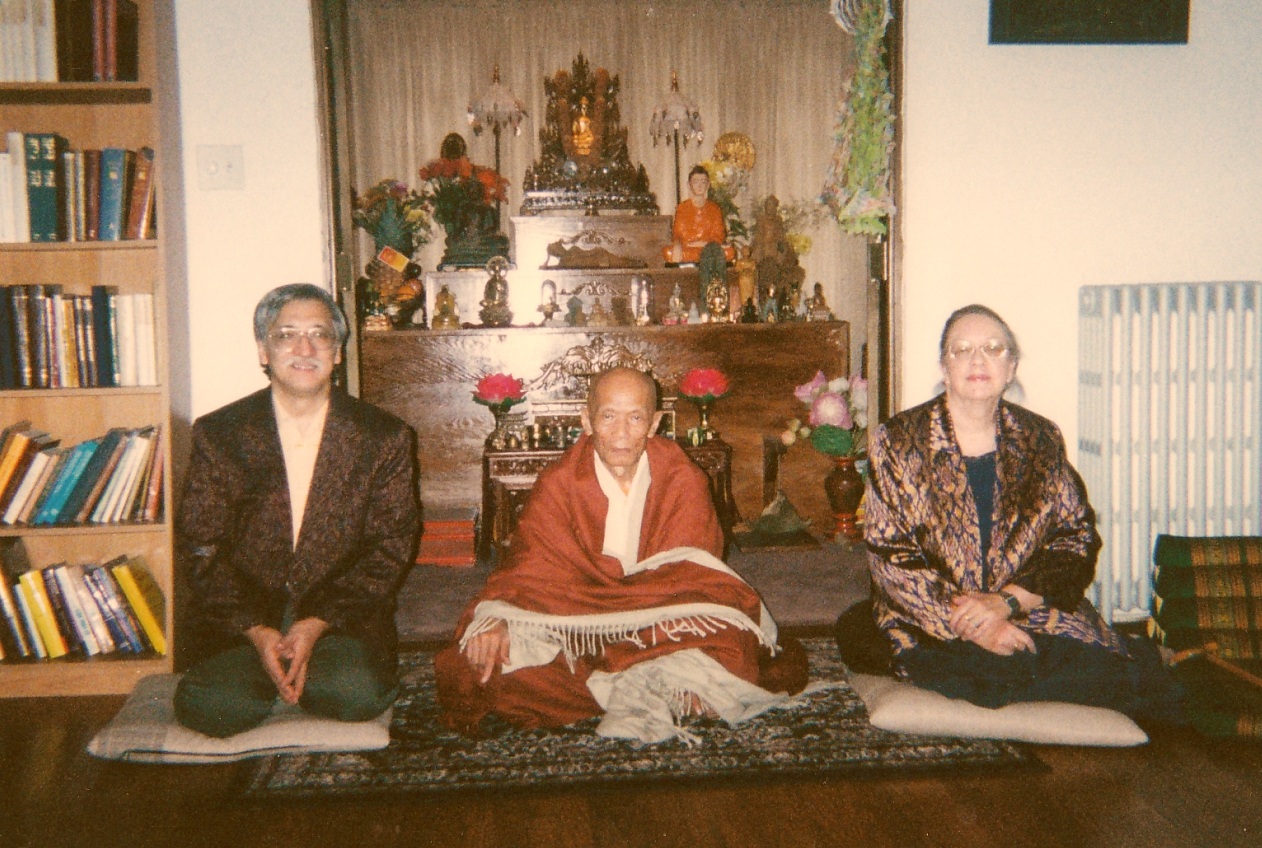 We dedicated Jataka Tales of the Buddha: An Anthology to Ven. U Khe Min Da and sent him a boxed set as soon as it was published by Buddhist Publication Society in 2010. He immediately acknowledged it with a brief postcard, which is his usual form of correspondence. International telephone calls are difficult and expensive, so we will probably not have another chance for extended communication. Nevertheless, we remember him as the real inspiration for our book. He was our first meditation teacher, and our first guide to the richness and depth of the Dhamma. We are also relieved that he has never scolded us as "book-makers" or accused us of showing off our ignorance.
We dedicated Jataka Tales of the Buddha: An Anthology to Ven. U Khe Min Da and sent him a boxed set as soon as it was published by Buddhist Publication Society in 2010. He immediately acknowledged it with a brief postcard, which is his usual form of correspondence. International telephone calls are difficult and expensive, so we will probably not have another chance for extended communication. Nevertheless, we remember him as the real inspiration for our book. He was our first meditation teacher, and our first guide to the richness and depth of the Dhamma. We are also relieved that he has never scolded us as "book-makers" or accused us of showing off our ignorance.
Thank you, Sayadaw, for all your kindnesses.
| In October 2011, Ven. U Khe Min Da entered a hospital in Moji. You can send him a message at:
Ven. U Khe Min Da
Moji Medical Center, Nishi 4F No. 405
Higashi-Minato-Machi 3-1
Moji-ku, Kita Kyushu 801-8502
Japan.
Fax: +81-93-332-7234
|
|
|
|
 In December 1985, while visiting Los Angeles, we met a Sri Lankan meditation teacher who asked us to organize a retreat for him in Japan the following March, when he would be passing through on his return home. About thirty people responded to our announcement.
In December 1985, while visiting Los Angeles, we met a Sri Lankan meditation teacher who asked us to organize a retreat for him in Japan the following March, when he would be passing through on his return home. About thirty people responded to our announcement.  We called, and Sayadaw himself answered the phone. We introduced ourselves and explained about our meditation retreat. "I'll come," he immediately replied. Afraid that we had been too abrupt, we described the situation a bit more. "Yes, I'll come," he repeated. That was Ven. U Khe Min Da. He needed no explanation except the dates.
We called, and Sayadaw himself answered the phone. We introduced ourselves and explained about our meditation retreat. "I'll come," he immediately replied. Afraid that we had been too abrupt, we described the situation a bit more. "Yes, I'll come," he repeated. That was Ven. U Khe Min Da. He needed no explanation except the dates. Sitting atop a mountain, the World Peace Pagoda overlooks the Straits of Dannoura and the port of Moji. The monastery, just below, is a simple wooden building, with a shrine room at one end and small rooms for monks at the other. There are also a storeroom, a sitting room for visitors, a tiny kitchen, and a very plain dining room with only one low table. A few years before, the abbot had added a concrete annex with a kitchen, a dining room, a toilet, and a bath on the ground floor, and a spacious meditation hall above, which had hardly ever been used. We slept in the meditation hall, and Sayadaw suggested that we have the next retreat there.
Sitting atop a mountain, the World Peace Pagoda overlooks the Straits of Dannoura and the port of Moji. The monastery, just below, is a simple wooden building, with a shrine room at one end and small rooms for monks at the other. There are also a storeroom, a sitting room for visitors, a tiny kitchen, and a very plain dining room with only one low table. A few years before, the abbot had added a concrete annex with a kitchen, a dining room, a toilet, and a bath on the ground floor, and a spacious meditation hall above, which had hardly ever been used. We slept in the meditation hall, and Sayadaw suggested that we have the next retreat there. As soon as we realized that this was, indeed, possible, we began organizing. That December, as soon as classes had finished, we left for the monastery. For the first few days, we cleaned, vacuumed the carpets, and arranged as much as we could. The next two weeks were an open retreat. Meditators arrived, singly or in small groups, and stayed as long as they could–some for two days, some a little longer, and one woman stayed a full ten days. We prepared simple vegetarian food, and, every morning, the local woman who cooked for the monks sent over rice and a side dish. In the evening Ven. U Khe Min Da gave a two-hour Dhamma lesson. He made himself available at all times for private consultation with any meditator who needed personal instruction.
As soon as we realized that this was, indeed, possible, we began organizing. That December, as soon as classes had finished, we left for the monastery. For the first few days, we cleaned, vacuumed the carpets, and arranged as much as we could. The next two weeks were an open retreat. Meditators arrived, singly or in small groups, and stayed as long as they could–some for two days, some a little longer, and one woman stayed a full ten days. We prepared simple vegetarian food, and, every morning, the local woman who cooked for the monks sent over rice and a side dish. In the evening Ven. U Khe Min Da gave a two-hour Dhamma lesson. He made himself available at all times for private consultation with any meditator who needed personal instruction.  For everyone, staying in Moji was a rare experience of Burmese monastic life. Every day, we woke up at five o'clock and attended morning chanting at six. After offering at least one dish to the monks, we ate our simple breakfast in our own dining room. As at Mahasi, we allowed everyone to set up his own meditation schedule of meditation, alternating sitting and walking. As much as possible, we kept Noble Silence all day. The only breaks from meditation were for chanting, lunch and the evening Dhamma lesson. At night, folding screens separated the men's and women's sleeping quarters.
For everyone, staying in Moji was a rare experience of Burmese monastic life. Every day, we woke up at five o'clock and attended morning chanting at six. After offering at least one dish to the monks, we ate our simple breakfast in our own dining room. As at Mahasi, we allowed everyone to set up his own meditation schedule of meditation, alternating sitting and walking. As much as possible, we kept Noble Silence all day. The only breaks from meditation were for chanting, lunch and the evening Dhamma lesson. At night, folding screens separated the men's and women's sleeping quarters. Winters in Northern Kyushu can be terribly cold when the freezing wind blows from Korea, but Ven. U Khe Min Da had purchased a heater for the hall, so it was comfortable all day.
Winters in Northern Kyushu can be terribly cold when the freezing wind blows from Korea, but Ven. U Khe Min Da had purchased a heater for the hall, so it was comfortable all day.  Ven. U Khe Min Da had first gone to Japan with the renowned meditation teacher, Mahasi Sayadaw, in 1956. When Mahasi Sayadaw asked for a someone to stay in Japan, Ven. U Khe Min Da volunteered. At that time, life in Burma was quite comfortable for monks, but Japan hadn't recovered from the devastation of World War II. The Japanese were still suffering from hardships and shortages. Life was difficult, and the climate was harsh.
Ven. U Khe Min Da had first gone to Japan with the renowned meditation teacher, Mahasi Sayadaw, in 1956. When Mahasi Sayadaw asked for a someone to stay in Japan, Ven. U Khe Min Da volunteered. At that time, life in Burma was quite comfortable for monks, but Japan hadn't recovered from the devastation of World War II. The Japanese were still suffering from hardships and shortages. Life was difficult, and the climate was harsh. During evening chanting, faces would sometimes appear at the windows. Whenever a ship arrived at Moji port with Burmese sailors, as soon as the men could get shore leave, they climbed the hill in their bare feet, no matter what the weather, to pay their respects. Many would return the next day to cook mohinga and other Burmese delicacies for the monks. It was their great joy, and the best thing they could do to overcome their homesickness.
During evening chanting, faces would sometimes appear at the windows. Whenever a ship arrived at Moji port with Burmese sailors, as soon as the men could get shore leave, they climbed the hill in their bare feet, no matter what the weather, to pay their respects. Many would return the next day to cook mohinga and other Burmese delicacies for the monks. It was their great joy, and the best thing they could do to overcome their homesickness. Sayadaw tried gently to teach the Japanese that Burmese monks were different from Japanese priests and that their lifestyles (vinaya) were different, but he was not always successful. He would, however, never refuse a gift that anyone offered, even when the gift was inappropriate. Anything he could not use himself, he would quietly pass on to someone who could. The gift would not be wasted, and the donor would have gained satisfaction from his offering. Moreover, Sayadaw was imaginative. Once, a Japanese businessman said that he would like to donate several bottles of high quality sake, Japanese rice wine, to the monastery. Japanese priests have no restriction against drinking alcohol, and such a gift to a Japanese temple is highly appreciated. Sayadaw merely asked that the bottles not be placed on the altar. He said that he would take care of them. As soon as the donor left, Sayadaw called one of his friends, a ships' chandler in the port, and arranged to exchange the sake for several cases of tinned milk. Whenever Sayadaw told this story, he always added, "They say that Christ was able to turn water into wine, but I was able to turn sake into condensed milk!"
Sayadaw tried gently to teach the Japanese that Burmese monks were different from Japanese priests and that their lifestyles (vinaya) were different, but he was not always successful. He would, however, never refuse a gift that anyone offered, even when the gift was inappropriate. Anything he could not use himself, he would quietly pass on to someone who could. The gift would not be wasted, and the donor would have gained satisfaction from his offering. Moreover, Sayadaw was imaginative. Once, a Japanese businessman said that he would like to donate several bottles of high quality sake, Japanese rice wine, to the monastery. Japanese priests have no restriction against drinking alcohol, and such a gift to a Japanese temple is highly appreciated. Sayadaw merely asked that the bottles not be placed on the altar. He said that he would take care of them. As soon as the donor left, Sayadaw called one of his friends, a ships' chandler in the port, and arranged to exchange the sake for several cases of tinned milk. Whenever Sayadaw told this story, he always added, "They say that Christ was able to turn water into wine, but I was able to turn sake into condensed milk!" When Sayadaw first arrived in Japan, he had been induced to take out a term life insurance policy, which matured about fifteen years ago. He was overjoyed to receive a payment of several million yen. Without hesitation, he arranged for a company in Holland to send rolls of high quality paper to the only printing press in Burma capable of handling it to produce new copies of the Tipitaka. He was never happier than when he was giving.
When Sayadaw first arrived in Japan, he had been induced to take out a term life insurance policy, which matured about fifteen years ago. He was overjoyed to receive a payment of several million yen. Without hesitation, he arranged for a company in Holland to send rolls of high quality paper to the only printing press in Burma capable of handling it to produce new copies of the Tipitaka. He was never happier than when he was giving. Many people have urged Sayadaw to record his experiences, his wisdom, and his teaching in a book, which, they assure him, would be very popular. Having studied as a boy at a missionary school in Burma, Sayadaw is fluent in English, and his Japanese is perfect. He could easily write in any of the three languages. He has constantly refused all such suggestions, strongly criticizing what he calls "book makers," those who are interested mainly in seeing their names in print. Whenever someone mentions writing a book, he replies, "The headmaster at the Methodist school where I studied always told us, "Don't show off your ignorance!'" Ven. U Khe Min Da consistently practices that maxim.
Many people have urged Sayadaw to record his experiences, his wisdom, and his teaching in a book, which, they assure him, would be very popular. Having studied as a boy at a missionary school in Burma, Sayadaw is fluent in English, and his Japanese is perfect. He could easily write in any of the three languages. He has constantly refused all such suggestions, strongly criticizing what he calls "book makers," those who are interested mainly in seeing their names in print. Whenever someone mentions writing a book, he replies, "The headmaster at the Methodist school where I studied always told us, "Don't show off your ignorance!'" Ven. U Khe Min Da consistently practices that maxim. We often invited Ven. U Khe Min Da to Kansai for a retreat, a ceremony, or a special dana at our house. He never refused to come for a day or even for a week. All of our friends were happy to meet him, to offer dana, and to hear his lessons in which he related many common everyday occurrences to the Dhamma in unique ways. Invariably, his teaching perfectly suited the particular issue that the listener was struggling with at that moment. We often wondered whether he was endowed with supernatural powers which allowed him to read minds.
We often invited Ven. U Khe Min Da to Kansai for a retreat, a ceremony, or a special dana at our house. He never refused to come for a day or even for a week. All of our friends were happy to meet him, to offer dana, and to hear his lessons in which he related many common everyday occurrences to the Dhamma in unique ways. Invariably, his teaching perfectly suited the particular issue that the listener was struggling with at that moment. We often wondered whether he was endowed with supernatural powers which allowed him to read minds. In 1999, we returned to the United States to take care of Visakha's ailing mother. One of our biggest regrets in leaving Japan was being separated from Ven. U Khe Min Da. About one year later, we used some of our airline miles to purchase a ticket for him to fly business class to Flint, Michigan. Mother was delighted to see him again. He encouraged her to watch her breath to ease the panic attacks that often occur with COPD patients. She never realized that she was actually meditating, nor did she come close to accepting Buddhist doctrines, but the hours she spent with Sayadaw gave her a great deal of comfort, and she enjoyed offering dana. We arranged for Sayadaw to stop in San Francisco on his return, and the Burmese community there were gratified at the opportunity to hear his teaching. as well.
In 1999, we returned to the United States to take care of Visakha's ailing mother. One of our biggest regrets in leaving Japan was being separated from Ven. U Khe Min Da. About one year later, we used some of our airline miles to purchase a ticket for him to fly business class to Flint, Michigan. Mother was delighted to see him again. He encouraged her to watch her breath to ease the panic attacks that often occur with COPD patients. She never realized that she was actually meditating, nor did she come close to accepting Buddhist doctrines, but the hours she spent with Sayadaw gave her a great deal of comfort, and she enjoyed offering dana. We arranged for Sayadaw to stop in San Francisco on his return, and the Burmese community there were gratified at the opportunity to hear his teaching. as well.
 A year or two later, we saw a video of Ven. U Khe Min Da receiving a second award in Burma, We were surprised to see that he had difficulty walking and that he had become quite frail. Nevertheless, when we invited him a second time to Flint, he accepted without hesitation. By this time, Mother had passed away, and we had moved with a Burmese family into a large brick house, almost a mansion, in a beautiful neighborhood. We prepared a room for him on the second floor, and he appreciated using Visakha's stair lift to ride up and down. Many of our friends were eager to meet him, and some members from our interfaith group dropped by the house. Sayadaw gladdened them all and gave impromptu meditation instruction to those who were interested. It was Halloween, and he was amused at seeing all the little ghosts and goblins who appeared at the door, "Trick or Treating" for candy.
A year or two later, we saw a video of Ven. U Khe Min Da receiving a second award in Burma, We were surprised to see that he had difficulty walking and that he had become quite frail. Nevertheless, when we invited him a second time to Flint, he accepted without hesitation. By this time, Mother had passed away, and we had moved with a Burmese family into a large brick house, almost a mansion, in a beautiful neighborhood. We prepared a room for him on the second floor, and he appreciated using Visakha's stair lift to ride up and down. Many of our friends were eager to meet him, and some members from our interfaith group dropped by the house. Sayadaw gladdened them all and gave impromptu meditation instruction to those who were interested. It was Halloween, and he was amused at seeing all the little ghosts and goblins who appeared at the door, "Trick or Treating" for candy.
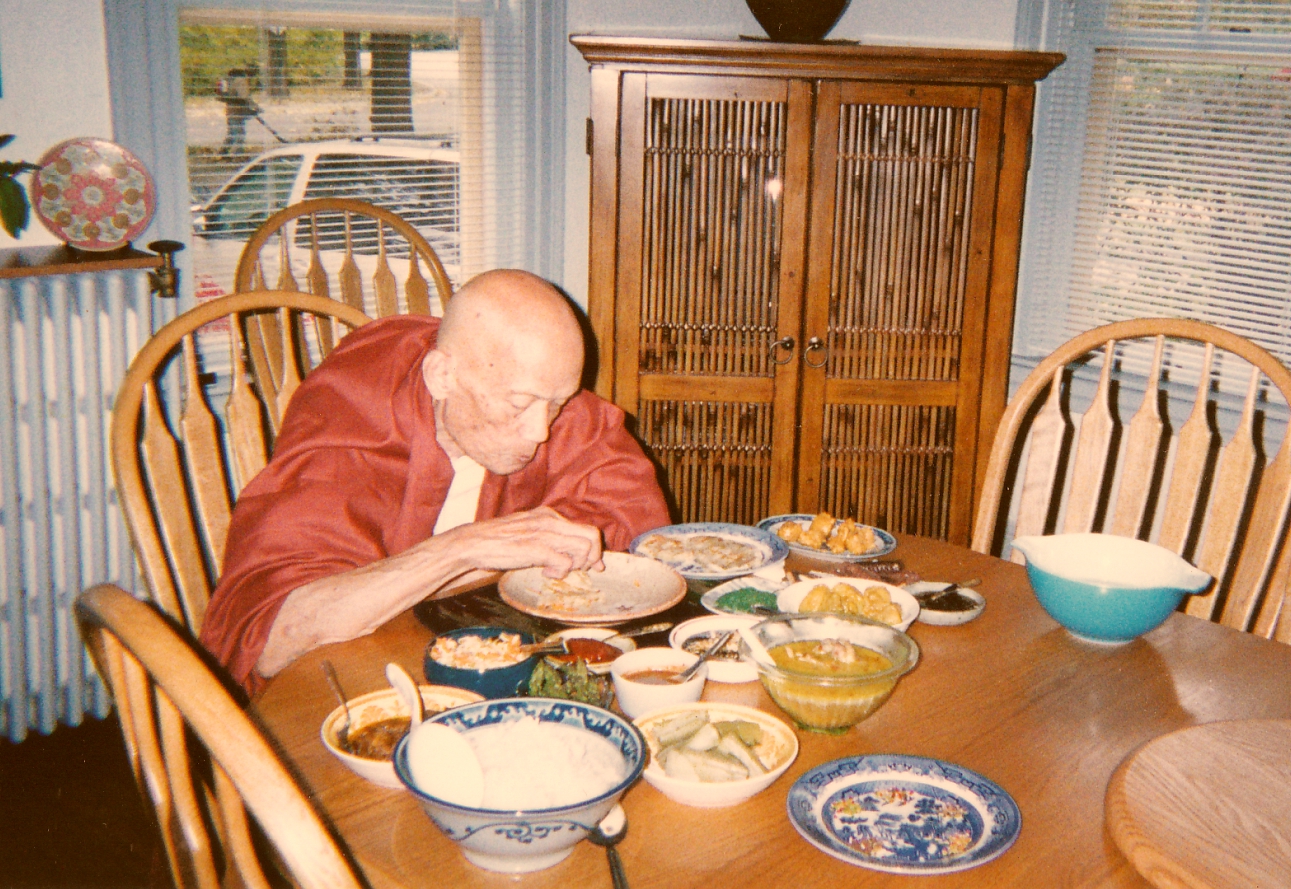
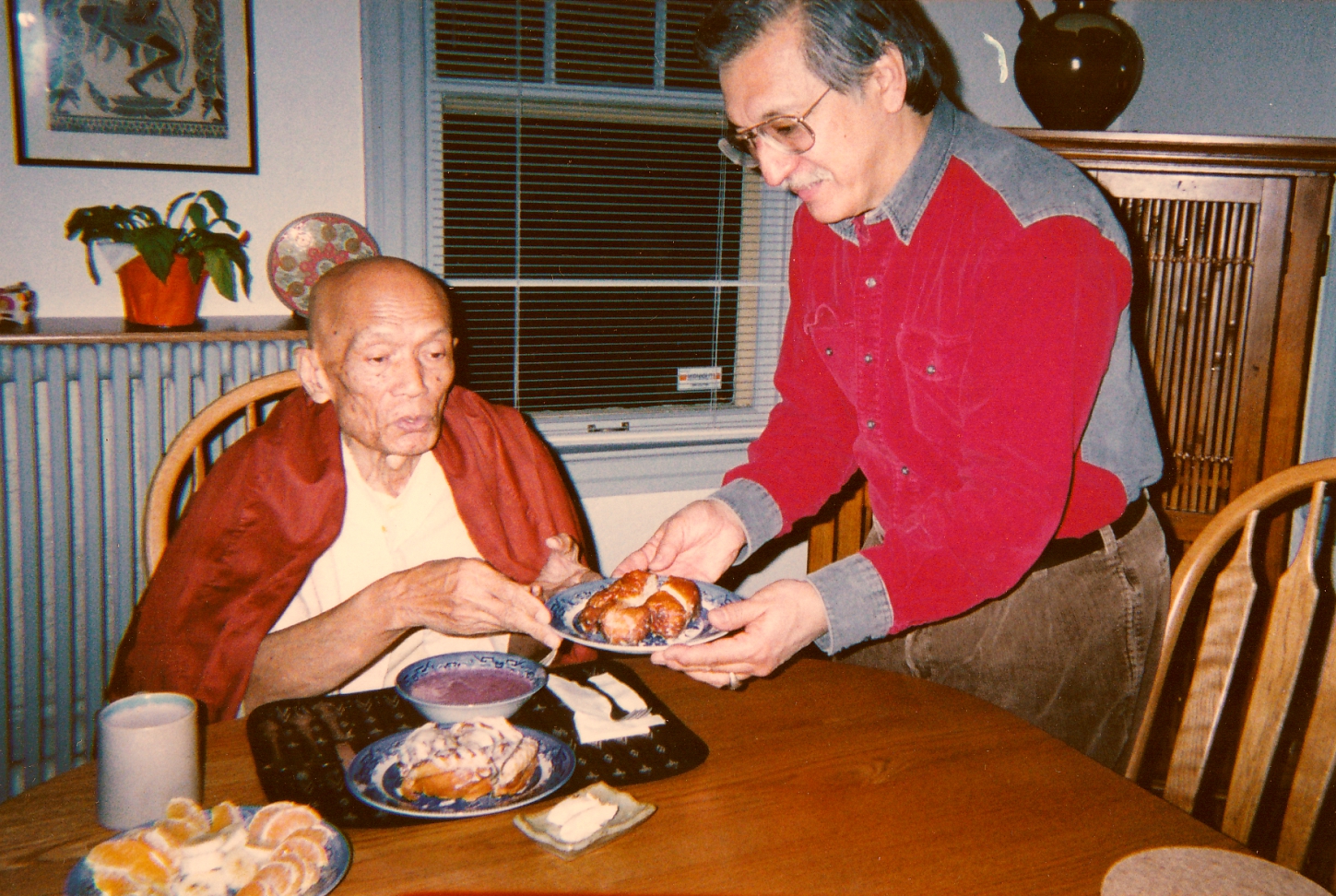
 We dedicated Jataka Tales of the Buddha: An Anthology to Ven. U Khe Min Da and sent him a boxed set as soon as it was published by Buddhist Publication Society in 2010. He immediately acknowledged it with a brief postcard, which is his usual form of correspondence. International telephone calls are difficult and expensive, so we will probably not have another chance for extended communication. Nevertheless, we remember him as the real inspiration for our book. He was our first meditation teacher, and our first guide to the richness and depth of the Dhamma. We are also relieved that he has never scolded us as "book-makers" or accused us of showing off our ignorance.
We dedicated Jataka Tales of the Buddha: An Anthology to Ven. U Khe Min Da and sent him a boxed set as soon as it was published by Buddhist Publication Society in 2010. He immediately acknowledged it with a brief postcard, which is his usual form of correspondence. International telephone calls are difficult and expensive, so we will probably not have another chance for extended communication. Nevertheless, we remember him as the real inspiration for our book. He was our first meditation teacher, and our first guide to the richness and depth of the Dhamma. We are also relieved that he has never scolded us as "book-makers" or accused us of showing off our ignorance.